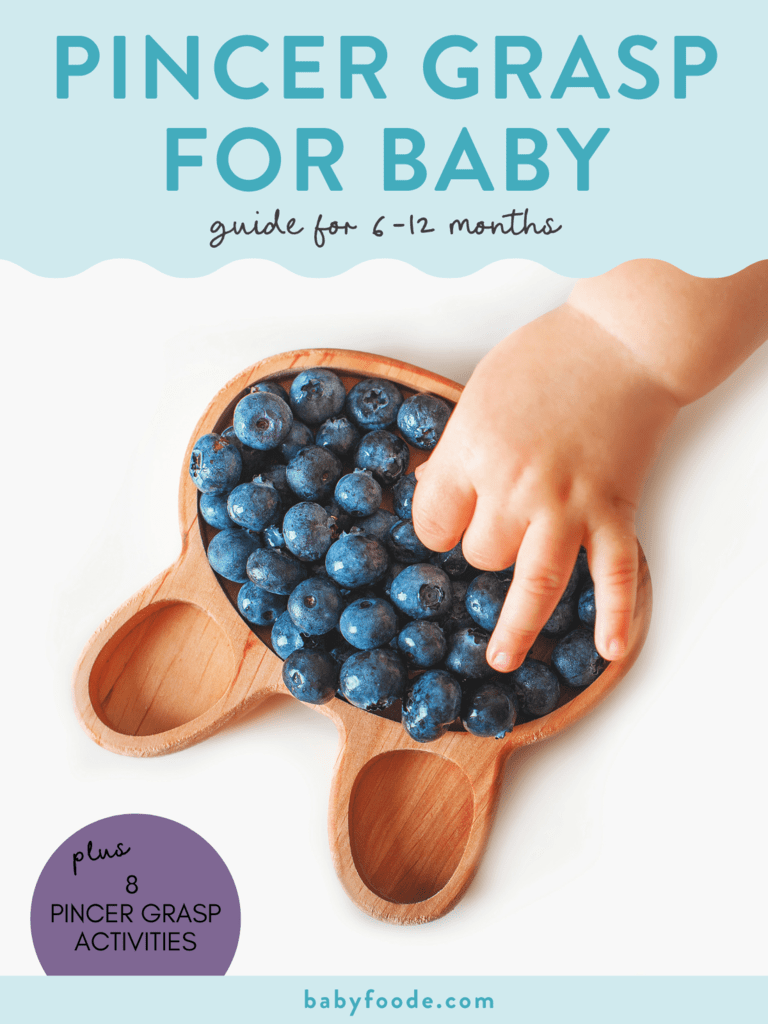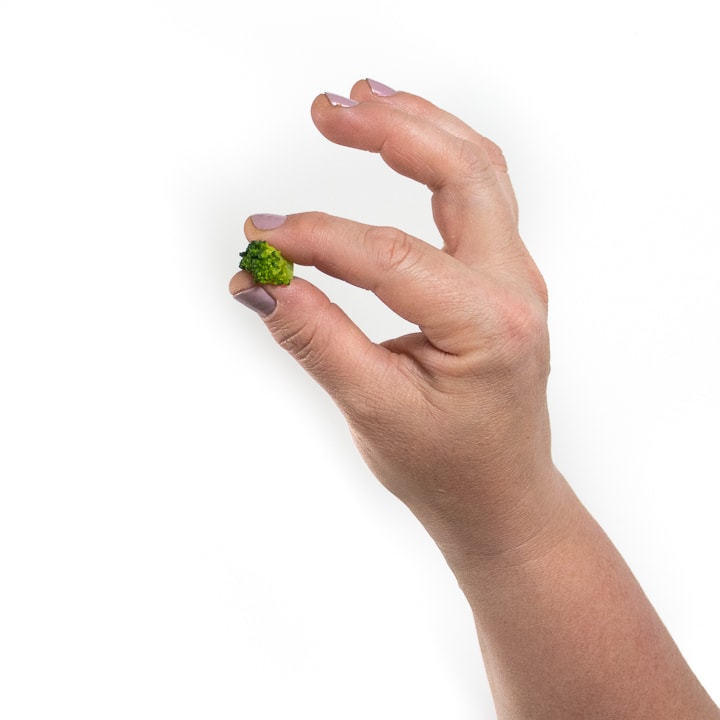Guide to Baby’s Pincer Grasp
A pincer grasp helps your baby pick up smaller pieces of food. In this guide, we’ll define the pincer grasp, why it’s important, explore different types of grasps, and provide recommendations for how to support the development of the pincer grasp. Great for babies 6-12 months.

Medically reviewed and co-written by Lauren Braaten, Pediatric Occupational Therapist (OT).
What is a pincer grasp?
The pincer grasp is what allows your baby to pick up small pieces of food using the thumb and fingerpads or fingertips. A pincer grasp represents the continued development of fine motor skills, the movements that require accurate control of small muscles in the hands.
Guide to Baby-Led Weaning Video
Watch this video to find out more about baby-led weaning.
Frequently Asked Questions
A crude or “inferior” pincer grasp starts to develop around 8-9 months, while a superior or “true” pincer grasp starts to develop around 10-12 months.
A pincer grasp is a helpful developmental skill for picking up and eating small pieces of food.
You can support baby in developing a pincer grasp by providing lots of opportunities for practice – we’ll discuss several ideas and activities below!
Difference Between Palmar and Pincer Grasps
Baby will go through many developmental grasps on their way from a palmer to a pincer grasp. Keep in mind that the timelines for developing each may vary from one baby to the next. Here are a few of the types of grasps you will see.


Types of Grasps
Palmar Grasp
Baby’s fingers are flexed with the thumb still within the hand. For babies learning to eat around 6 months of age, this is a developmentally appropriate grasp.
Radial Palmer Grasp
The Palmer Grasp starts to develop around 6-7 months of age. Baby starts to grasp an item more towards the thumb side of the palm and starts to use the thumb more.
Raking Grasp
Baby starts to extend and flex the fingers to grasp an item and bring it into the palm which starts to develop around 7-8 months.
Crude Pincer Grasp
Starts to develop around 8-9 months. Baby starts to use the pads of the pointer finger and thumb to grasp a small object. This grasp is also often called an inferior pincer grasp.
Superior Pincer Grasp
The Superior Pincer Grasp is where your baby is able to use the tips of the index finger and thumb to pick up small items, which starts to develop around 10-12 months.

Why Baby Needs a Pincer Grasp to Eat Foods
Although having a pincer grasp is not necessary to start offering foods to your little one (see our Guide to Baby’s Palmar Grasp for more info), it definitely helps baby with picking up smaller pieces of food and getting them to her mouth. A pincer grasp helps baby have more control and success when eating a variety of foods, whether they are trying to grasp a crunchy cheerio, squishy blueberry, slippery pea, or just trying to get that last grain of rice off their plate!
The pincer grasp is just the beginning of fine motor development needed for other daily activities. Your little one will be using their pincer grasp when he puts on his socks, pulls the straps on his shoes, holds a utensil, draws with crayons, or fastens a button. Giving your baby lots of opportunities to practice developing and refining their pincer grasp can help with all these skills.



Pincer Grasp Activities for Babies
- Give plenty of opportunities for baby to self-feed small pieces of foods, such as cheerios, puffs, and cooked beans and veggies, like gently squished peas and carrots
- Serve a few small pieces of food spread out on baby’s tray or placemat instead of in a bowl. This can encourage baby to pick up pieces one at a time, instead of scooping up a bunch of pieces from a bowl.
- Pass baby a small piece of food using your thumb and index finger to hold it, instead of placing it in your palm. Baby will have to use the tips of their thumb and index finger to grasp the food from you.
- Strengthen the index finger by pointing and poking. Point at pictures in a book, poke holes in playdoh or pop the buttons in this Melissa & Doug Poke-a-Dot book.
- Play with blocks of various textures and sizes that baby can pick up using her fingers
- Hold onto items with a round, cylinder shape, such as stacking cups, ring toys, or puzzle pieces with large knobs. This type of shape helps form an “o” shape with the hand, helping to develop the hand muscles needed for a pincer grasp.
- Encourage baby to pull off their own socks and shoes.
- Have baby pull and tug onto toys with a string, such as this Elephant Push and Pull toy
